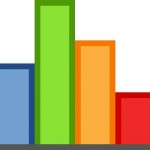 In Math, we have started studying Data Management. I have described the learning objectives for the grade two students and the grade three students in my class below… along with ways that you can support your child at home:
In Math, we have started studying Data Management. I have described the learning objectives for the grade two students and the grade three students in my class below… along with ways that you can support your child at home:
GRADE TWO:
For the next while, our focus in math is on gathering and managing data (information). Students will learn to identify the characteristics of different objects and to sort and classify the objects using diagrams, charts, and graphs. They will also learn about surveys – how to choose a good survey question, and how to collect and organize data using charts and tallies. We will look at data that’s been displayed in different ways and use math language to describe what we have discovered.
Try some of these activities with your child at home:
- Gather a few items that go together in some way and ask your child to describe the objects. Ask: “Why do these belong together?” Take turns finding more objects that would belong to the set. Then ask your child to look for a way to sort the objects you’ve found. Which sorting group has more?
- Together, create a dinner survey question. Think about the possible choices for dinner and ask family members to make a choice. Have your child tell you about the results of the survey.
- Keep a tally to record the number of times the refrigerator is opened before school in the morning. Compare that number to a tally kept that same evening. Talk about why the total is different or the same.
- Think about different ways to sort a handful of coins (e.g., silver/copper/2 colours). Sort the coins and line up the ones in each group to make a graph. Make a label for each line and a title for the graph.
GRADE THREE:
For the next while, your child will design surveys to collect data; sort and organize data using Venn diagrams and tally charts; represent data by creating pictographs and bar graphs with scales of 2, 5, and 10; and describe and interpret bar graphs, pictographs, and circle graphs. Your child will explore what makes a survey question a good one, how best to organize and display a given data set, and what sorts of things a graph can tell us.
Throughout this time, you and your child can practise some activities such as the following:
• Your child can count some items that come in large quantities (e.g., straws) and create a pictograph with a scale of 10 to represent the items.
• Your child can design a question, conduct a survey, tally the results, and display the data in a bar graph. For example, they could ask, “How many of my books do I want to read, or read again: soon, someday, or never?” and then interpret the results.
• Your child could look in the media for examples of bar graphs with scales and tell you 3 or 4 things the graph shows. The scale might be larger than 10; they could discuss why the scale used is appropriate.
• When sharing a circular item, such as a pie, encourage your child to compare the sizes of slices (cut from the centre); this is similar to a circle graph.